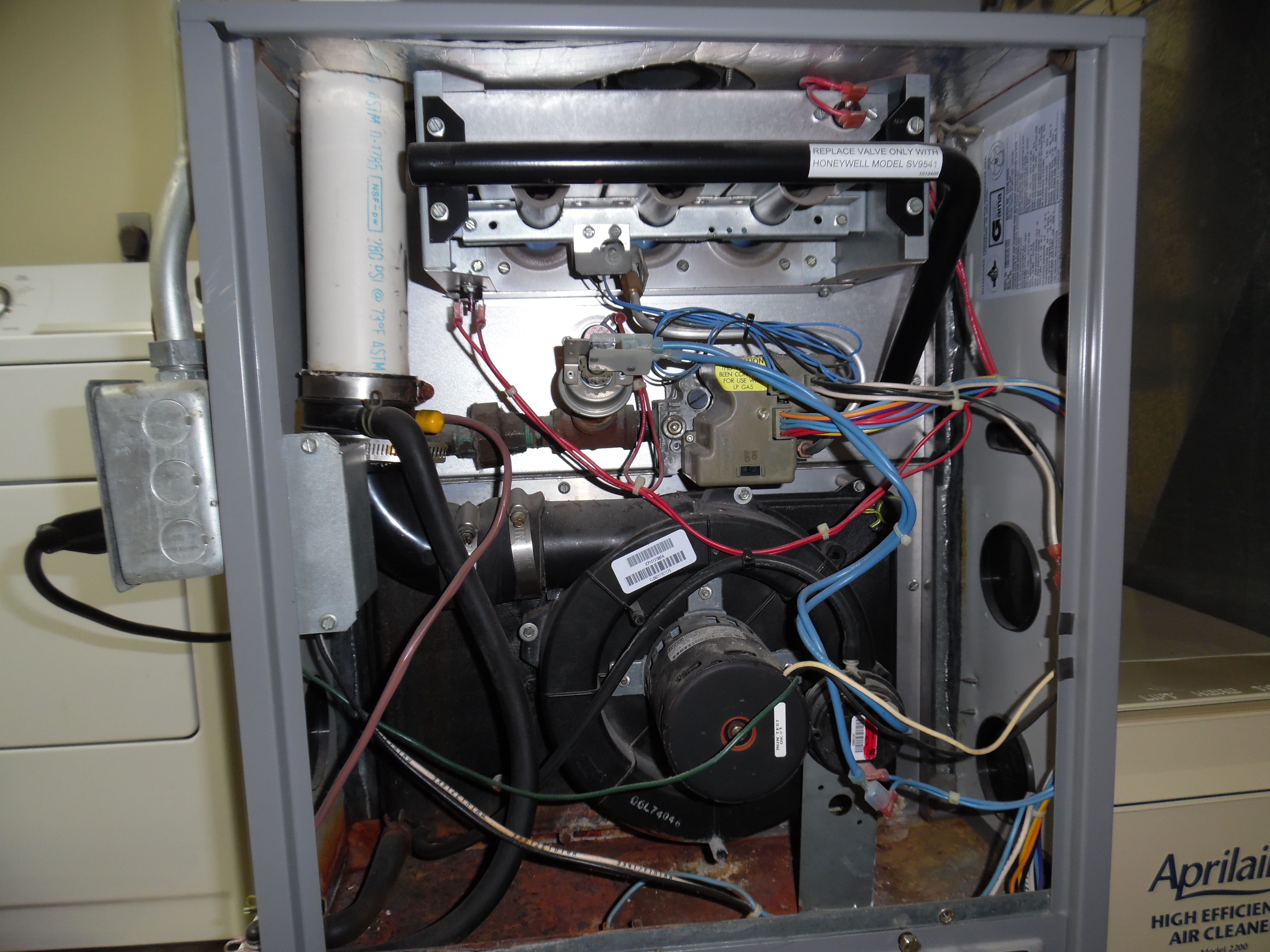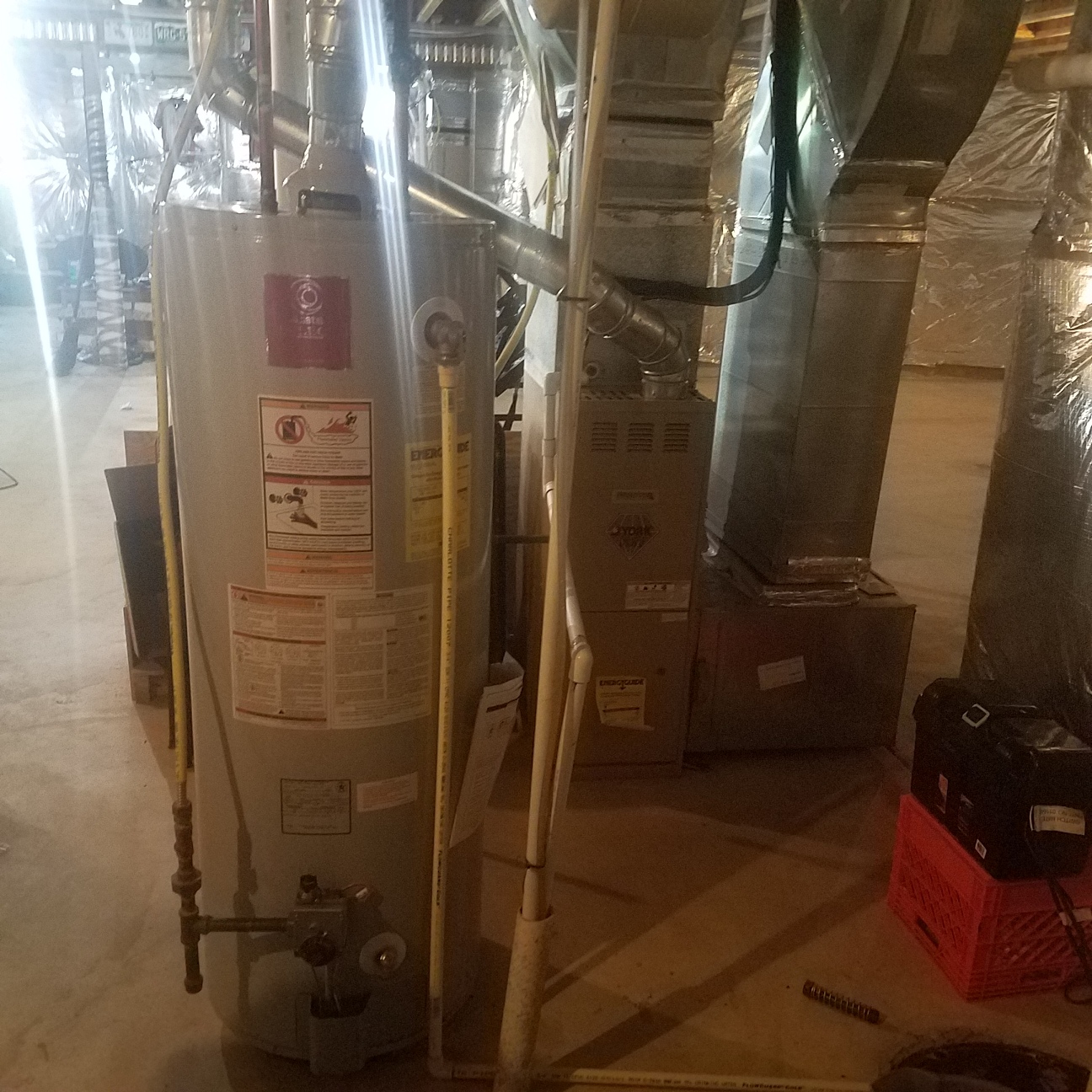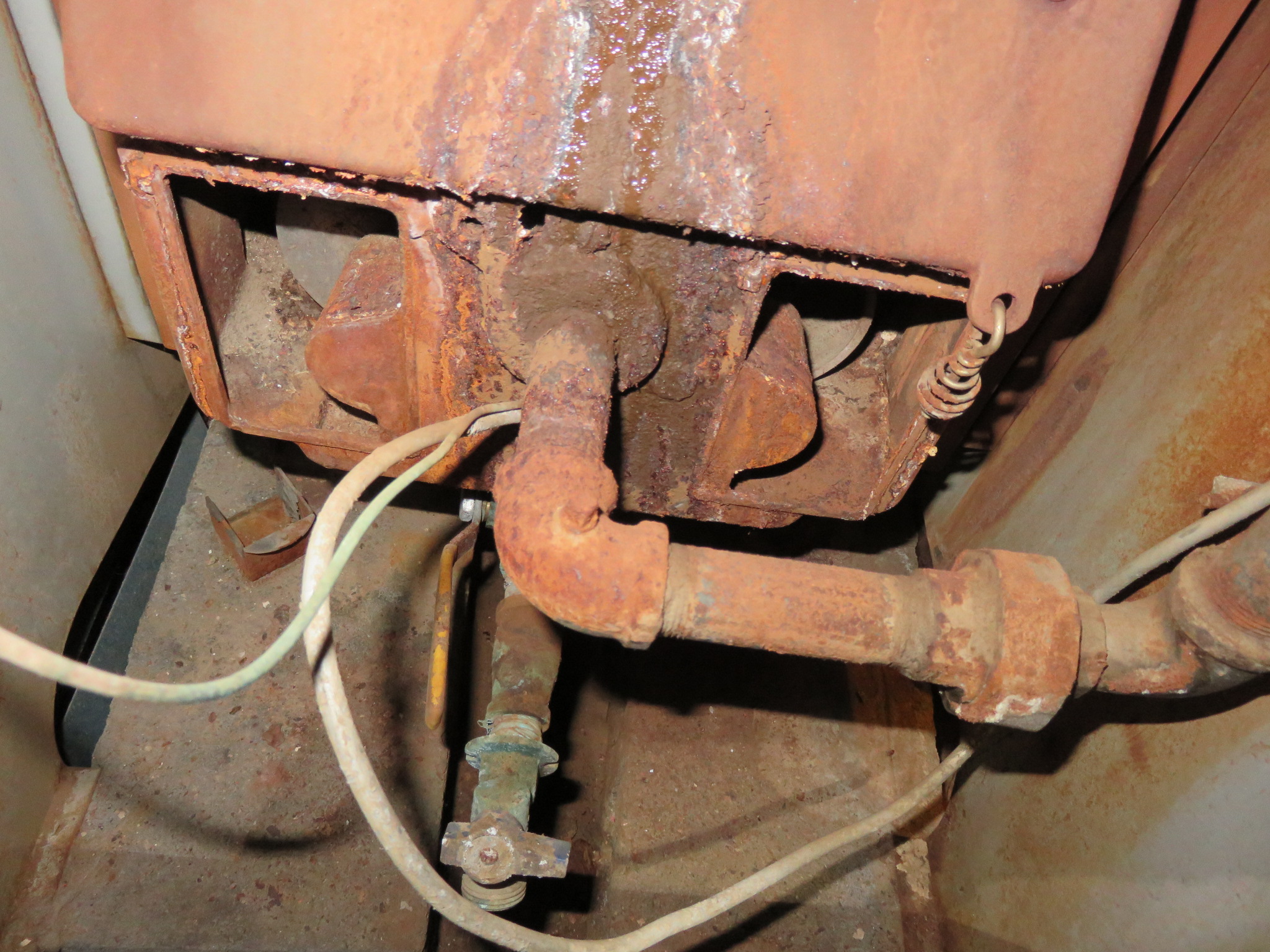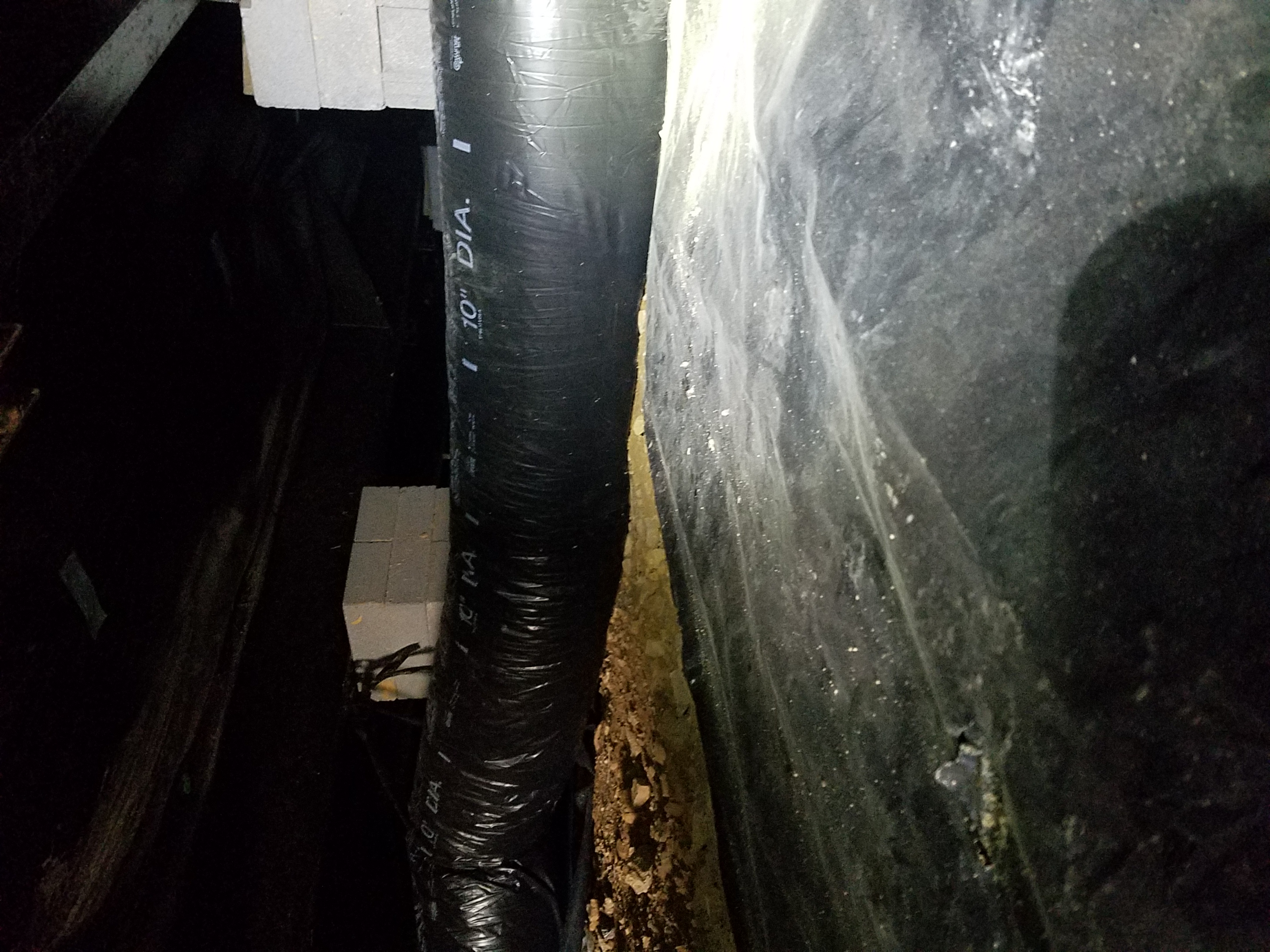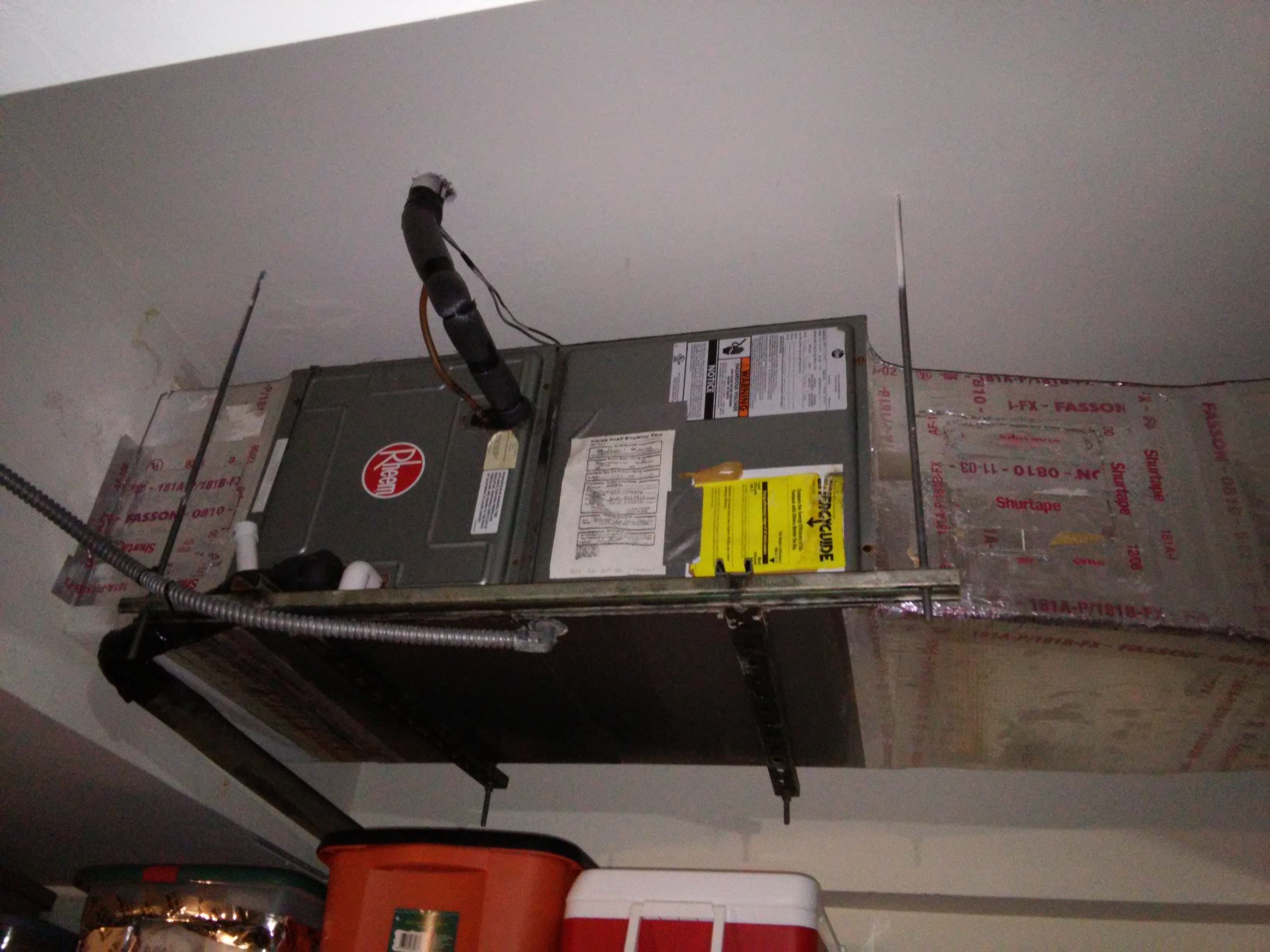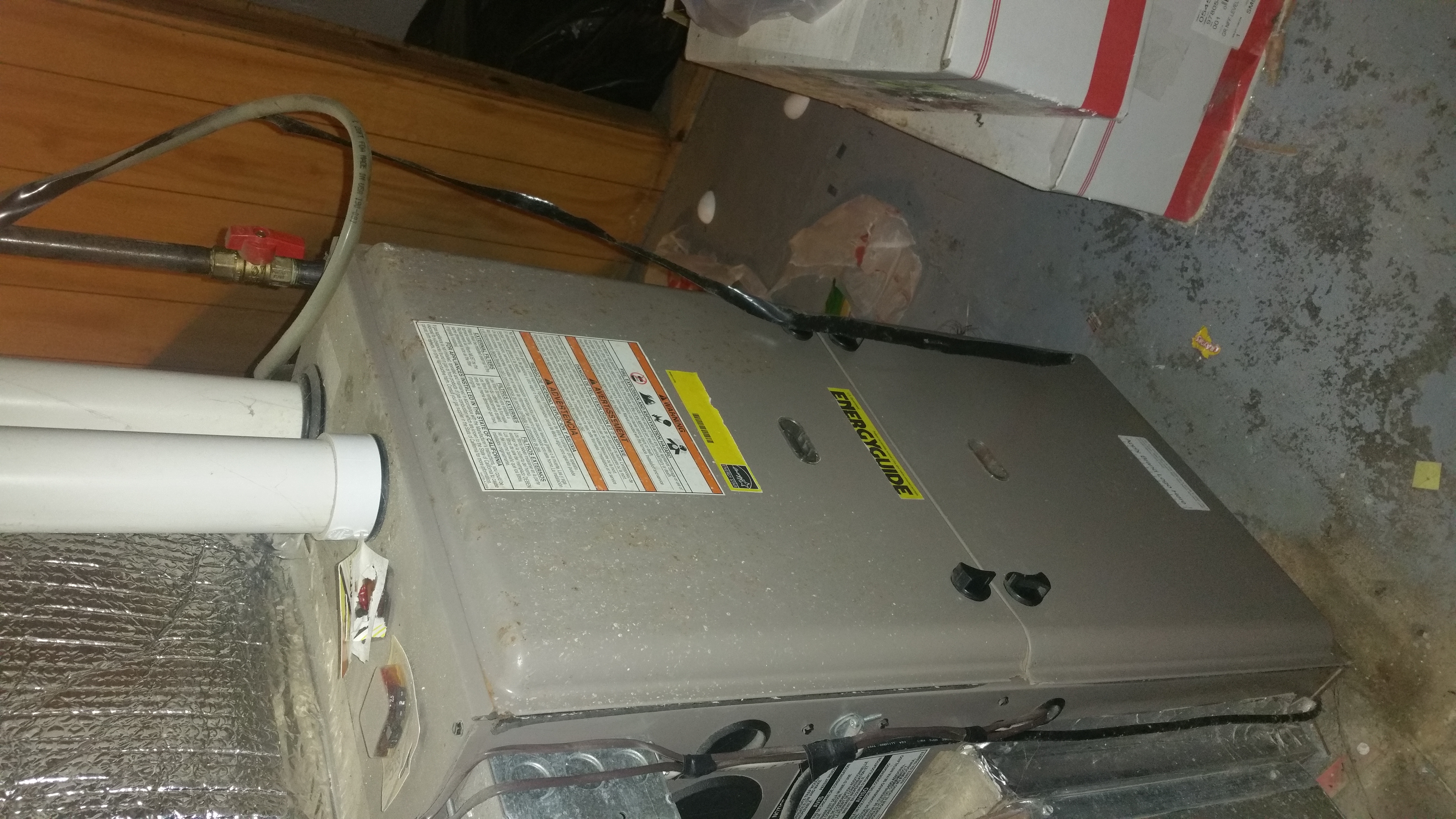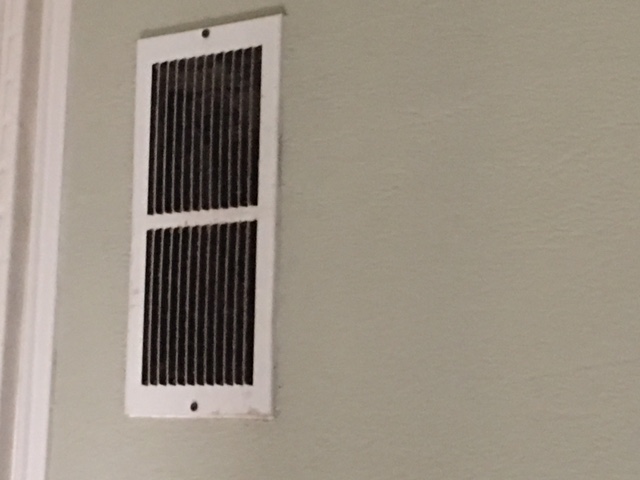The article titled Homeowner Maintenance: Changing the HVAC Fliter" is a good tool for your clients. It is also a good reminder for inspectors to remind their clients on the importance of inspecting their air filter on a regular basis for replacement. Without regular replacement clogged up filter can cause pressure drops for low air flow or none at all, resulting in poor cooling or heating. This adds stress the the equipment that may result in premature failure, repairs, and expenses.
This photo shows a high efficiency, liquid propane, forced air heating system that I inspected the other day. One very noticeable feature of this particular unit is the excessive rusting inside the unit. There were signs of previous leakage at the condensation removal line connection.
The diagram or picture that I found in the internachi library is entitiled “filter inspection”, and does an excellent job of displaying an act that is sometimes forgotten by, or simply ignored by home inspectors, despite the importance of such an inspection.
Attached is a photo of the water heater and adjacent forced air furnace in my home. The furnace heats one of three zones in the house. Both, the water heater and the furnace, use natural gas as a heat source. The basement is currently unfinished, providing sufficient combustion and draft air for both units to operate safely. If the basement was finished and these units were in an enclosed room, I would need to know the minimum room sized required to house them if no additional combustion air was provided from the outside.
We know that the rule is 50 cubic feet of room volume per 1000 BTU of appliance. The furnace is an 80,000 BTU furnace and the water heater is a 40,000 BTU heater. I would need (80 + 40)50 or 6000 cubic feet of room volume. The ceilings are 10 foot in the basement. That leaves 600 square feet of floor space required, or a room of approximately 25 by 25 feet. The room would have to be vented at the top and bottom and the door used should be self-closing and weather-stripped to contain dangerous gases should a system malfunction occur.
Attached is a picture from a recent inspection of a steam boiler. Notice the extreme corrosion and rust on the internal components. There is also a small leak at the low water cutoff that is rusting the burner cover door.
This is a crossover duct on a modular house that conveys conditioned air from one half of the unit to the other. In this case the duct is not supported in the crawlspace and is resting on the ground. Recommend additional supports to raise it off the ground to prevent moisture and rodent problems.
Inspecting the HVAC System for Duct Leaks and Energy Loss. This article goes on to describe the various components of the heating and air conditioning duct work and where possible air leakage is most prevalent. How to check and properly seal air leaks is also noted.
I chose a picture of a identification plate on a indoor furnace. I learned that the website buildingcenter.org allows you to date most home appliances and equipment. This is important to give the buyer a clear idea of an approximate age of the units. This would allow them to make an informed decision on when they may have to replace the equipment.
This is a return air filter. It’s purpose is to filter the air that is returning to the furnace or air handler to be either heated or cooled. This particular filter is undersized. This can allow dust and other debris to enter the system. This needs to be replaced with the correct size filter.
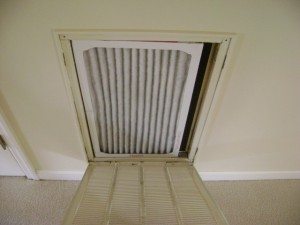
Air conditioners function by compressing cold refrigerant gas. When the gas is compressed it heats up and travels through the condenser, where it condense into a liquid. The hot liquid refrigerant then reaches the expansion valve, or capillary tube, where it is boiled off into a cold gas in the evaporator. The air to be conditioned travels across this evaporator and the heat energy is removed by the refrigerant and the process starts over.
The homes air conditioning air handler is located in the garage. It is in working order and cools the home good. The suction line is pitched properly towards the condenser outside. A cleaning of the evaporator coils is recommended. Filter change is also recommended.
I choose to report on the article about aluminum siding. The siding started to be used in the 1940’s and continued up through the 1970’s. Since then aluminum siding has gone out of style and the majority of people us vinyl siding. Some advantages of aluminum siding are its light weight, waterproof and takes paint well. Disadvantages are it dents easily and if it oxidizes it could be very labor intensive to repaint.
The HVAC is located in the basement. Its a combined heat and air conditioning in one. The air condition is ran off electricity while the heat is natural gas. The furnace is a high efficiency heater. All exhaust are ran directly outside by PVC pipes and sealed very well.
I chose garage inspections. When inspecting a garage if there open always look at the trusses to see if any alterations have been made. Also check to make sure the trusses are sitting on the actual exterior wall and not an interior wall or attached using joist hangars. Always call these problems out.
The electronic air cleaner is no longer in use. A media filter has been installed in it’s place. This is a common practice. The disposable filter should be inspected monthly to determine the remaining useful life before replacement will be needed.

I reviewed the image labeled “Heat Exchanger Heat Flow”. This is wonderful illustration of entire heat exchanger, and how much of the component is not visible during the inspection. It will aid in my explanation to clients how, and more importantly why, the system works the way it does.
This essay is about return air vents. Return air vents should be as far away from supply vents as possible. Return air vents should not be located in garages, closets, bathrooms, kitchens or unconditioned attics. Return vents in garages can be particularly dangerous due to ability for carbon monoxide to be drawn into the air handler and distributed through the supply ducts and into the living space.
My essay is from the article on central air-conditioning system inspection. It is important to keep vegetation and debris away from the condensing unit for proper airflow. These can cause the unit to function poorly or not at all. It is a good practice to clean the condenser coil and evaporator coil at least once a year.
For this research and writing assignment I have decided to write about inspecting aluminum wiring. Aluminum wiring was used approximately between 1965 to 1973, In this time period it was discovered that aluminum wiring was more likely to cause electrical fires then copper. It is important to note if a house has aluminum wiring so that it can be taken care of properly.
For this inspection and writing assignment I have decided to write about the return to the air handler. The return is where your heating and ac system gets its air. It sucks the air from the room or hallway where the return is and puts it through a filter and into the air handler.
![]()
